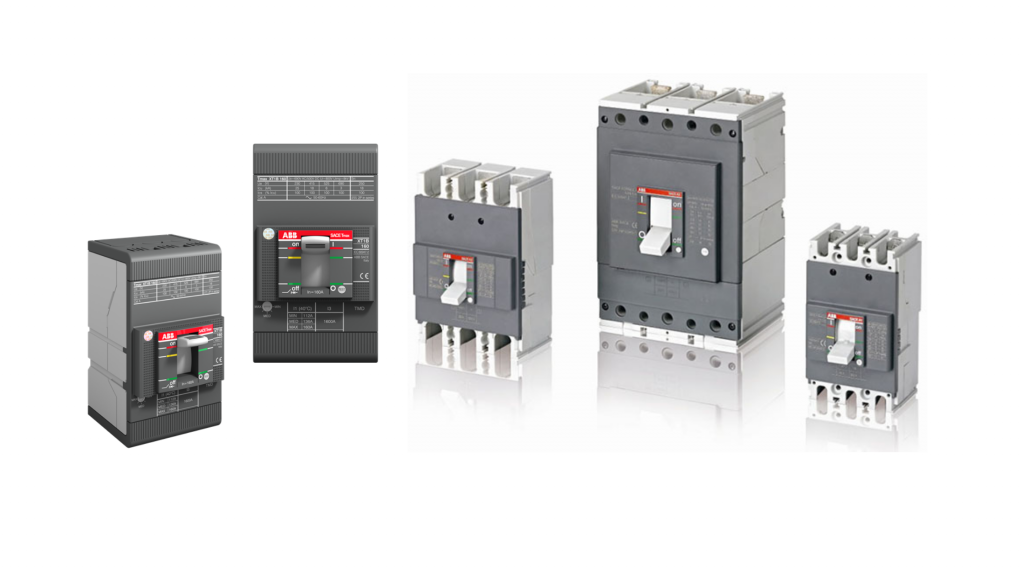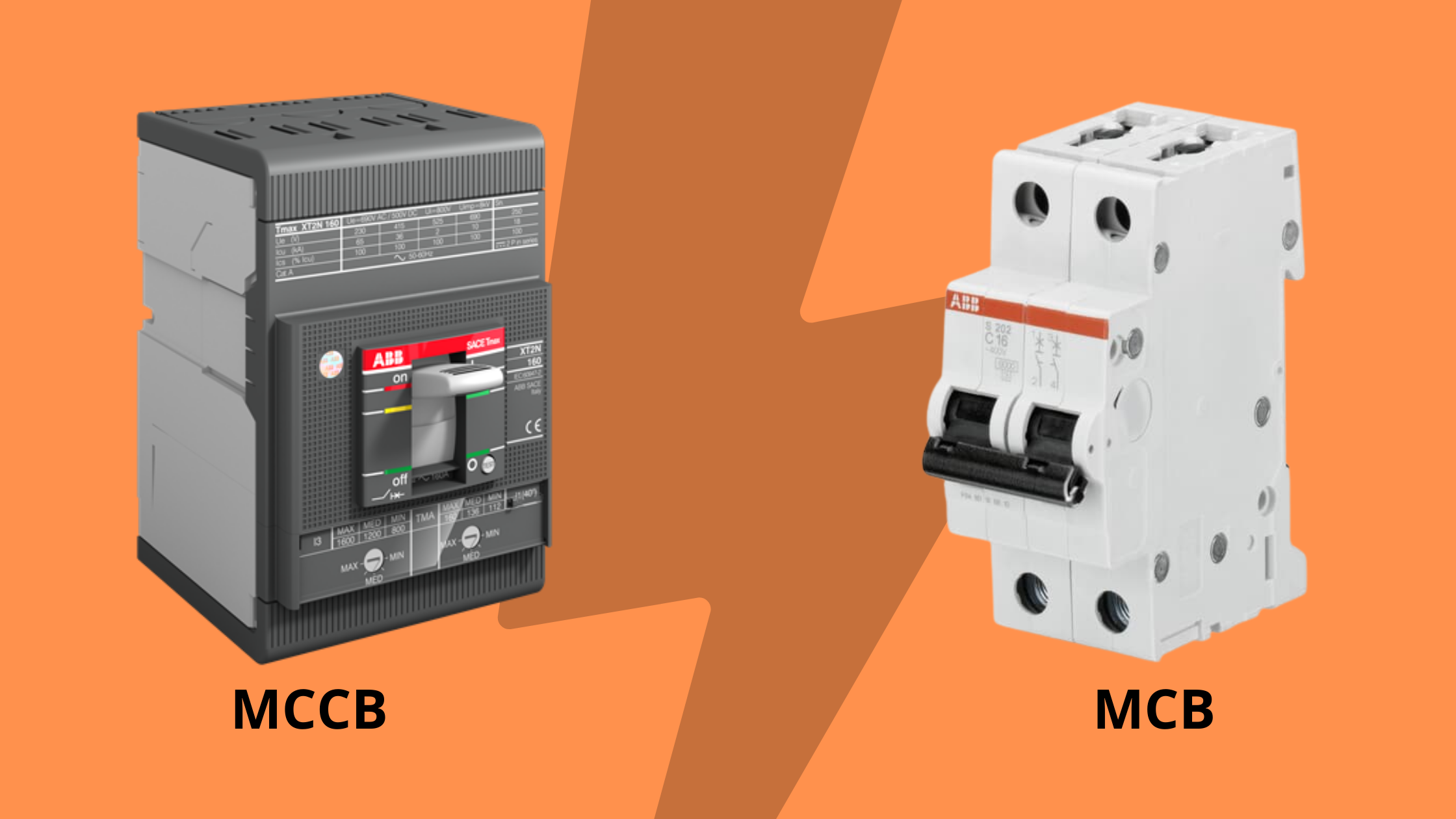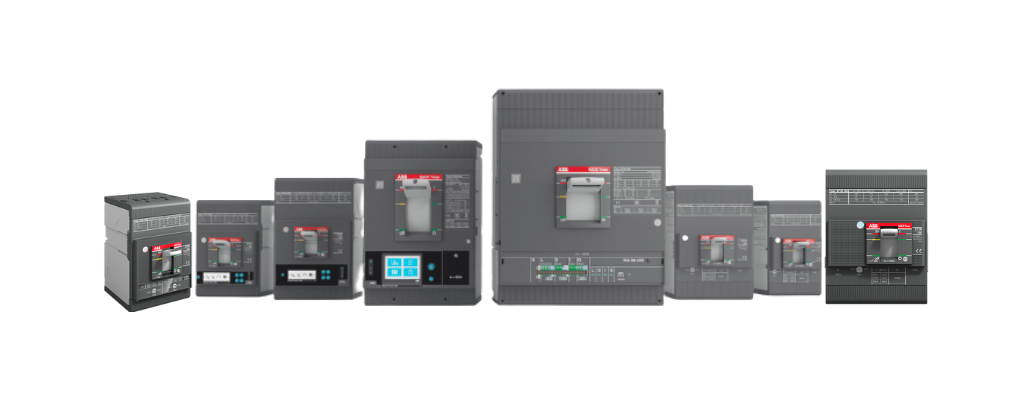Moulded Case Circuit Breakers (MCCB): Functions and Components Explained
In today’s world, the need for electricity is increasing. Not only do we realize the value of electricity during its scarcity but should also ensure smart ways to save electricity. To counter this issue, electricity control devices are being installed to monitor the flow of current. Sometimes, overflow of current and short circuits can potentially damage the circuit. Low voltage switchgear is used to protect the circuits in the events of uncertainty. In this blog, we will uncover what is MCCB? and the functions, components and specifications of MCCB.
What Is MCCB?
MCCB is the acronym used for moulded case circuit breakers used to protect the electrical circuit and its components from excessive current. If this current is not isolated at the right time, it will lead to overload or a short circuit. These devices have a wide range of frequencies which makes them suitable for multiple applications to protect the electrical circuits. They are available in current ratings ranging from 15Amps to 2500Amps making them usable in both low and high-powered applications. You can buy ABB MCCBs at the best prices by visiting our website www.micronovaimpex.com.

MCCBs by ABB
Functions of MCCB
● Protection against overload
● Electric fault protection
● Switching the circuits on and off
The MCCBs can be disconnected automatically and manually and are prominently used as a replacement for MCBs (miniature circuit breakers) in PV systems. MCCBs are housed within a moulded case to protect them from dust, rain, oil, and other chemicals.
As these devices deal with the high current, it needs proper maintenance from time to time which can be done by regular cleaning, lubricating, and testing.
Protect your electrical equipment
All your electrical equipment needs a steady flow of current to function better. It’s important to install MCCB or MCB depending upon the load current. By doing so, the delicate machine control systems can be protected by isolating the power supply during electrical fault.
Prevent Fires
MCCBs that meet industry standards and are of good quality are suggested to ensure maximum safety. These electromagnetic devices detect fault at times of electrical surge or a short circuit to protect it from fire, heat, and explosion.
Components and Specifications of MCCB
The four major components of MCCB include
Frame
It is also known as the moulded case, provides space for insulated housing to mount all the circuit breaker components. This is made of a thermoset composite resin or a glass polyester to provide high dielectric strength within its compact design. The designation is assigned depending upon the type of the size of moulded case and is further used to describe the breaker’s characteristics (maximum voltage and current ratings).
Operating mechanism
Open and closing of the contacts is done through the operating mechanism. The speed of opening and closing the contacts is determined by how fast the handle is moved. If the contacts are tripped, you will be able to see the handle in a midway position. It’s impossible to trip the breaker if it’s in the on position, this is also called “trip-free”.
When the breaker trips i.e., if the handle is in the midway, it has to be moved to the off position first and then to the on position. In the case of breakers mounted in a group such as panel boards, the different handle positions are useful to find out the faulted circuit. Few breakers come with a manual trip to test the mechanism.
Arc Extinguisher
Arc Extinguisher: An arc is generated when a circuit breaker interrupts a current flow. The function of an arc extinguisher is to limit and divide that arc, thereby extinguishing it. The arc extinguishing chamber is enclosed in a high-strength insulation box which is mainly composed of a stack of steel plates. When the contacts split due to an interruption, the current flowing through the ionized area of the contacts generates a magnetic field around the arc and the arc extinguisher.
The lines of the magnetic field created around the arc drives the arc into the steel plates. The gas is then deionized, and the arc separates, allowing it to cool. Standard MCCB’s use a linear current flow through the contacts and under short-circuit conditions, a small blow-apart force is generated, which helps to open the contacts.
The majority of the opening action is developed by mechanical energy stored in the trip mechanism itself. This is because the current in both contacts flows in the same direction and attracts each other. Newer breakers use a reverse loop with current flowing in nearly opposite directions. This creates a repulsive action and results in a greater blow-apart force. This force assists rapid arc extinguishing by causing the contacts to open faster. The force is directly proportional to the size of the fault current. The greater the fault, the greater the force, and the faster the contacts open.
Trip Unit
The Trip Unit is the brain of the circuit breaker. The key function of a tripping unit is to trip the operating mechanism in the event of a short circuit or a sustained overload current. Conventional moulded case circuit breakers use electromechanical trip units. Protection of a circuit breaker is provided by combining a temperature-sensitive device with a current-sensitive electromagnetic device, both of which operate mechanically on the trip mechanism.
Electronic trip units are now available and they can significantly provide much more advanced protection and monitoring. Most moulded case circuit breakers utilize one or more different trip elements to provide circuit protection for various applications. These trip elements prevent thermal overloads, short circuits, and arcing ground faults.
Conventional MCCB’s provide either a fixed or interchangeable electromechanical trip unit. If a new trip rating is required for a fixed trip breaker, the entire breaker must be replaced. Interchangeable trip units are also known as rating plugs. Some breakers offer interchangeability between electromechanical and electronic trip units within the same frame.
To ensure the efficiency of MCCB in its operation, regular maintenance including visual inspection, cleaning, and testing should be done.
Applications of MCCB
MCCBs are designed to handle high currents and are used widely in heavy-duty applications such as adjustable trip settings for applications with low currents, protecting motors, protecting capacitor banks, welding machines, protecting generators and electric feeders.
Specifications of MCCBs
- Ue – Rated Operational Voltage.
- Ui – Rated Insulation Voltage.
- Uimp – Impulse withstand voltage.
- In – Nominal Rated Current.
- Ics – Service Short Circuit Breaking Capacity.
- Icu – Ultimate Short Circuit Breaking Capacity.
Differences between MCB and MCCB

| MCB | MCCB | |
| Abbrevation | Miniature Circuit Breaker | Moulded Case Circuit Breaker |
| Protection | Protects system from overload current | Protects the system from over-temperature and short circuit current |
| Interrupting Current | 1800A | 10kA – 200kA |
| Tripping Circuit | Fixed | Movable |
| Remote On/Off | Not Possible | Possible |
| Usage | Low Voltage Circuits | Heavy Current Circuits |
| Applications | Domestic | Large Industries |
How Micronova provides you the best solution for MCCB?
We supply 1Pole, 2Pole, 3Pole and 4Pole MCCBs at the best prices and discounts online.
Micronvoa’s technical expert team assists in selecting the best products or alternatives to match the customer requirements. We also
- Educate customers about the in-built functions of the products
- Help customers to buy the product at a competitive price
- Help customers with VC installation
- Provide on-time delivery
- Supply genuine products
Ranges of MCCB offered by Micronova
| T8 | Up to 3000A, 600V AC -up to 125ka at 480 V-3, 4 pole |
| T7 | Up to 1200A, 600V AC-up to 100ka at 480 V-3, 4 pole |
| T6 | Up to 800A, 600 VAC /DC-up to 100ka at 480 V- 3,4 pole |
| T5 | Up to 600A, 600V AC/DC-up to 150ka at 480 V -3,4 pole |
| XT4 | Up to 250 A, 600 VAC/DC -up to 200ka at 480 V -3,4 pole |
| XT3 | Up to 225 A, 480 V AC/500V DC- up to 65ka at 480V-3,4 pole |
| XT2 | Up to 125 A, 600 V AC/500V DC-up to 200ka at 480V-3,4 pole |
| XT1 | Up to 125A, 480V AC/500V DC -up to 100ka at 480V-3,4 pole |
| A2 | Up to 250A, 240v AC/250V DC-up to 25ka at 240V -2,3 pole |
| A1 | Up to 100A, 240 V AC/250 V DC -up to 25ka at 240V-1,2,3 pole |
ABB MCCBs are known for their quality and reliability. We are the leading online suppliers and distributors for ABB MCCBs.
Visit www.micronovaimpex.com, the leading online electrical product suppliers and distributors. To shop for the best quality MCCB from ABB, reach us at digitalsales@micronovaimpex.com or call us on +91 8147090154


LEAVE A COMMENT